How the media helped shape a negative perception of the Rohingya

As we celebrate World Press Freedom Day, it is essential to recognise the influential role that journalism plays in humanitarian crises, such as the case of Rohingya refugees in Bangladesh. The media has the capacity to shape the public's perception of refugees, influencing opinions within a nation. The press in Bangladesh has undergone a significant transformation in its portrayal of the Rohingya, initially presenting them as innocent victims and later as threats and burdens, often echoing the government's stance.
In August 2017, the media portrayed Rohingya refugees as hapless people, persecuted due to their ethnicity and religion, and in dire need of humanitarian assistance. Bangladesh was lauded for its "open border" policy, which saved countless Rohingya lives, and Prime Minister Sheikh Hasina was hailed as the "mother of humanity."
However, this narrative quickly shifted, and within months, the media focused on the economic strain the refugees placed on the host country. Reports of environmental destruction and rapid population growth among the refugees became widespread. Politicians labelled the Rohingya as a "security risk," resulting in harsh policies such as internet restrictions, SIM card confiscations, barbed wire fencing, forced repatriation, and relocating refugees to the isolated Bhashan Char. Local media in Ukhiya and Teknaf have played a significant role in fuelling anti-Rohingya sentiments, presenting a one-dimensional image of the Rohingya as a threat and a burden. These media outlets have skilfully exploited Facebook's algorithms to amplify their negative narratives, further contributing to the marginalisation of the Rohingya community.
Since then, the media's portrayal of Rohingya refugees has consistently been negative. Bangladeshi newspapers primarily highlight stories of crime and violence associated with the refugees. Photographs often show them surrounded by armed law enforcement officers. This oversimplified representation of the Rohingya crisis perpetuates the notion of "refugee-ness," painting refugees as problematic and burdensome.
A concerning trend in global news coverage involves the promotion of hate speech and stereotyping, leading to the social exclusion of refugees and migrants. Refugees are frequently depicted as a menace, with the media presenting them as an endless wave of individuals who will take jobs, burden the state, and ultimately threaten the native way of life. This coverage is often driven by political agendas, with unverified information from the authorities making its way into headlines and being disseminated across different platforms.
During a recent initiative to form a global Rohingya organisation, a retired Bangladeshi security officer shared his experience of encountering a 12-year-old traumatised boy in the refugee camps at the height of the crisis. His description of the boy as a potential future terrorist was an unwittingly delivered slight, revealing his underlying perception of the Rohingya as threats. The Rohingya attendees, feeling disempowered, could only meekly express gratitude for the ex-officer's presence at the meeting, despite the negative implications of his statement.
Censorship and self-censorship contribute to this biased narrative, as journalists fear retaliation from media owners or the government if they challenge the official stance. Consequently, the media struggles to provide balanced coverage when political leaders steer the narrative, and the confusion between facts and opinions worsens the problem.
The authorities skilfully directed the narrative surrounding Bhashan Char, targeting both domestic and international audiences. They successfully guided compliant domestic media to produce extensive news articles, promotional videos, and even a book, all while avoiding any mention of the numerous challenges faced by the Rohingya on the island. These unaddressed issues included drownings during escape attempts, inadequate facilities, deprivation of liberty for trafficked Rohingya, and mistreatment by the authorities, among other concerns.
Bangladeshi journalists have been largely unsuccessful in holding the authorities accountable for the treatment of refugees. There has been inadequate investigation and reporting on human rights abuses, mistreatment by law enforcement, and poor living conditions in the refugee camps.
Regarding funding and aid, the management of international aid and financial resources allocated for Rohingya refugees have not been thoroughly monitored or reported on by the media, creating opportunities for potential mismanagement or corruption. This lack of oversight extends to international NGOs, including UNHCR and others, which have been able to operate with minimal scrutiny due to an uninterested media landscape.
Refugees, as a vulnerable minority, can easily become scapegoats for various societal problems. The media can counter this issue by adhering to ethical principles, avoiding stereotypes, and engaging with audiences. Journalists should commit to core principles such as independence, impartiality, and humanity. The lack of interest taken by Bangladeshi civil society and professional associations in these issues is both an indictment and an own goal, highlighting the need for a more proactive approach to address the challenges faced by the Rohingya community.
Arguably the most significant issue is the repatriation process. The Bangladesh government's efforts to repatriate Rohingya refugees to Myanmar have not faced enough scrutiny, even though there are ongoing security concerns and human rights abuses in their home country. It is important to note that unsustainable repatriation has been occurring for 40 years, and this is not new information for the press. Therefore, it is telling to see the media continue to echo the same narrative as the government, despite the historical context and long-standing nature of the issue.
Another crucial aspect to consider is the undervaluation and underrepresentation of journalism by the refugees themselves. Nowhere is this more evident than in the realm of photojournalism. The work of refugee journalists, particularly those from the Rohingya community, is often not recognised, valued or given space for expression. This has led to the marginalisation of refugees in various forms, including lack of credit, low or no pay, and exclusion from the field of photojournalism.
National and foreign news organisations tend to view Rohingya refugees primarily as stringers or fixers, often only utilising their skills during disasters or high-profile events. Consequently, they rarely engage these individuals to delve deeper into the daily lives and experiences of the refugees or to uncover more complex stories about the community. This limited perspective contributes to a superficial understanding of the Rohingya crisis and further marginalises their voices in the global media landscape.
Publishing photographs taken by the refugees without due credit and compensation contributes further to their marginalisation. Repeated instances of such actions have reinforced this exclusionary practice. Organisations that would never consider using the work of other photographers without permission or compensation may view images taken by Rohingya photographers as fair game. This double standard undermines the potential for refugees to have their voices heard and their perspectives shared, perpetuating the one-sided narrative that dominates mainstream media.
Refugees, as a vulnerable minority, can easily become scapegoats for various societal problems. The media can counter this issue by adhering to ethical principles, avoiding stereotypes, and engaging with audiences. Journalists should commit to core principles such as independence, impartiality, and humanity. The lack of interest taken by Bangladeshi civil society and professional associations in these issues is both an indictment and an own goal, highlighting the need for a more proactive approach to address the challenges faced by the Rohingya community.
In light of the 2017 crisis and the military coup in Myanmar, the need for responsible, empathetic, and well-informed journalism in Bangladesh is more pressing than ever. It is crucial to bolster investigative journalism that is dedicated to thorough research, providing reliable information, and holding those in power accountable. By investing in ethical and public-spirited journalism, we can ensure that the complex stories of the Rohingya refugee crisis are brought to light.
Jeff Crisp is former head of Policy Development and Evaluation at UNHCR.
Shafiur Rahman is a journalist and documentary maker.
Chris Gunness is director of the Myanmar Accountability Project.
Rezaur Rahman Lenin is an activist academic.
Maung Zarni is a fellow (genocide) at the Documentation Center of Cambodia, co-founder at FORSEA, the Free Rohingya Coalition, and the Free Burma Coalition.

 For all latest news, follow The Daily Star's Google News channel.
For all latest news, follow The Daily Star's Google News channel. 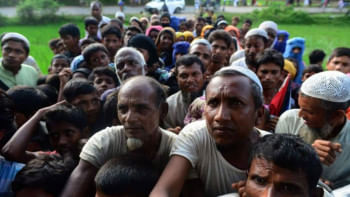

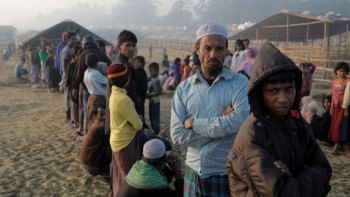


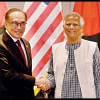

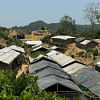
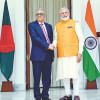



Comments